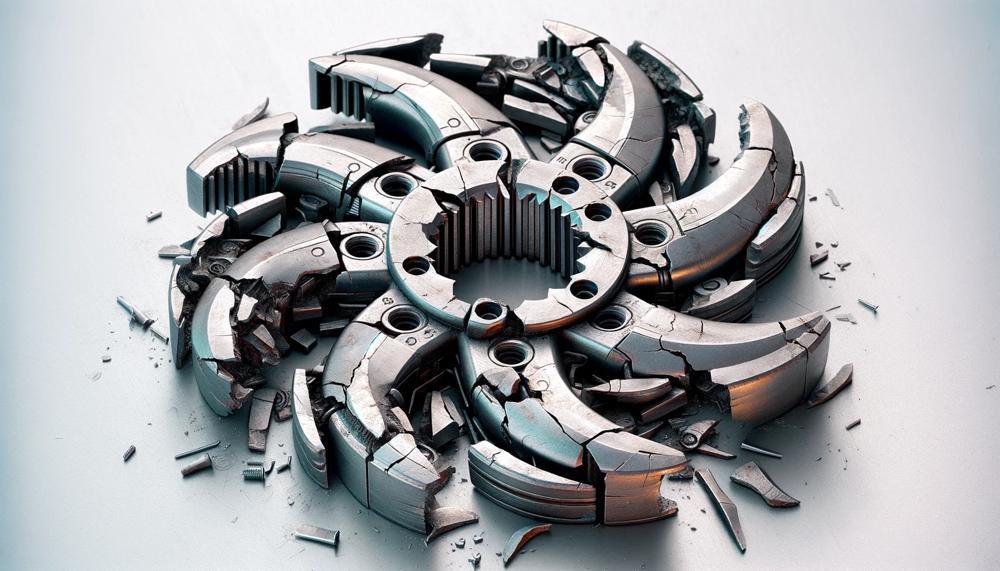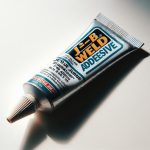Metal is an important part of modern infrastructure, but it often breaks down due to normal use or accidents. In the past, welding was the most common way to fix these metal problems. But not all situations are good for welding, and not everyone has the right tools or skills to do it. In this lies the art of fixing metal without the sparks and wires of soldering.
Imagine a world where fixing a broken metal gate, fixing up the body of a car, or repairing an old iron piece is as easy as doing a do-it-yourself job on a Sunday afternoon. This dream isn’t too far-fetched. The new options we have access to now are game-changers. Let’s look at the main advantages and interesting options to traditional ways of welding.
So, how to fix broken metal without welding?
You don’t have to weld to fix broken metal in these ways:
- Glue for epoxy: Epoxy sticks metal to metal, wood to wood, plastic to plastic, ceramic to ceramic, glass to glass, and more. People know epoxy glue for being able to stand up to high temperatures and having a high mechanical strength. You can fix cracks and holes in metal surfaces with fast-setting epoxy glue. This is the best way to fix metal items that can’t be heated or that have complicated shapes.
- Tensing up: An artist can join metal sheets or plates together with rivets instead of heat or glue. A few tools and jewelry wire are all you need to start riveting.
- Locks and keys: Bolts are the best way to join two pieces of metal together without bonding. When you use bolts to join two pieces together, you can take them apart later if you need to.
- Putting together: Soldering is a complicated way to join two different kinds of metal without melting them together. It doesn’t melt metals like welding does. Instead, it melts solder, which is a filling material, and joins the two metals together.
So, let’s get started.
Contents
How To Bond Metal To Metal Without Welding
To bond metal to metal without the complexities and hazards of welding, consider these effective alternatives that ensure robust joins without heat damage. Each method suits different needs and project scales, from DIY tasks to industrial applications.
| Method | Description | Advantages |
| Epoxy Adhesives | Two-part adhesives that cure to form a strong bond. Suitable for a variety of metals. | High strength, versatile, fills gaps, and cures at room temperature. |
| Mechanical Fasteners (Bolts, Screws) | Physical hardware used to join metals mechanically. | Simple to apply, adjustable, and removable for maintenance. |
| Liquid Adhesives or Tapes | Adhesives or double-sided tapes designed for metal-to-metal application. | Easy to use, no special tools required, and ideal for thin metals. |
| Nanomaterials Technology | Advanced materials used to bond metals at the molecular level. | Innovative, providing strong bonds without heat, and suitable for sensitive components. |
| Soldering/Brazing | Low-temperature metal joining techniques using a filler metal. | Less heat than welding, precise, and produces a clean finish. |
| Riveting | Joining metals using mechanical rivets that are deformed during the process. | Durable, traditional method, and does not require heat. |
Each of these methods offers a solid solution for projects where welding is not viable, whether due to the risk of heat damage, the cost, or the need for specific equipment. From the simplicity of mechanical fasteners to the high-tech approach of nanomaterials, there’s a method tailored to nearly every requirement.
Adhesives, particularly epoxy types, are celebrated for their strength and versatility, often heralded as the go-to choice for tough, permanent bonds without the need for welding equipment.
Ways To Bond Metal To Metal Without Welding
Bonding metal to metal without the sparks and heat of welding is a crafty knack. It’s like piecing together a jigsaw puzzle without the picture on the box.
Industrial Adhesives
Epoxy adhesives are the heavyweights in the world of glue. They’re like the glue that refuses to quit, offering a bond that’s not just strong but downright stubborn.
It’s a popular choice in the automotive and aerospace sectors where giving up isn’t an option.
Mechanical Fasteners
Imagine bolting and screwing pieces of metal together as if you were zipping up a jacket. It’s straightforward and reversible, making it a go-to method when permanence is negotiable.
This technique shines in airplane assembly and automotive manufacturing, where precision is paramount.
Surface Preparation
A clean and roughed-up surface is like a well-prepped canvas for an artist. It’s essential for adhesive and mechanical fasteners to work their magic.
Proper preparation ensures the bond is not just a fleeting affair but a long-lasting commitment.
Alternative Methods
Beyond the traditional, there are innovative ways to join metals without welding, each suited to specific applications, from the precision of aerospace to the robust needs of construction.
| Method | Application | Advantages |
| Brazing and Soldering | Aerospace, Precision Work | Perfect for heavier or precise joins, doesn’t warp metal |
| Riveting and Clinching | Construction, Automotive | Quick, strong, and vibration-resistant |
| Press Fitting | Plumbing, Automotive | No welding materials required, clean finish |
| Threaded Fasteners | Construction, Aerospace | Versatile, durable, easy to disassemble |
| Fold Bonding | Household Appliances, Automotive | Strong bond without additional materials |
| Magnetic Pulse Welding | Aerospace, Automotive | Modern, no welding materials, precise control |
| Ultrasonic Welding | Electronics, Aerospace | Non-invasive, uses high-frequency vibrations |
Each technique has its theatre of operations, where it performs best. Whether you’re folding metal like origami in fold bonding or using the futuristic vibes of magnetic pulse welding, there’s a method to suit your needs.
Welding Fundamentals
To mend broken metal without resorting to welding, one must master several crafty skills and employ a variety of ingenious techniques.
These methods range from using strong adhesives to manipulating mechanical fasteners, each with its own set of instructions and applications. Here’s a succinct guide outlining the necessary skills and techniques:
| Technique | Application | Key Skill |
| Strong Adhesive | Bonding metal pieces | Choosing the right adhesive, precise application, and patience for curing |
| Mechanical Fasteners | Quick fixes | Identifying the suitable type and size, proper alignment |
| Soldering | Small, thin metal pieces | Controlling the soldering iron, applying the right amount of solder |
| Brazing | Thicker metal pieces | Choosing correct filler material, heat control |
| Fusion Welding (Professional) | Joining metal with high temperature | Best left to experts; understanding of the process |
| Pressure Welding | Joining metal without heat | Applying appropriate pressure |
| Explosive Welding | Specialised applications | Handling explosives (professional only) |
| Forging | Shaping metal | Heat and pressure manipulation |
| Casting | Creating shapes from molten metal | Mould making, controlling molten metal |
| Coating | Corrosion protection | Applying protective materials evenly |
Epoxy adhesive stands out as the titan among glues for its formidable bond strength, making it a sterling choice for joining metal without welding. It’s crucial to select an adhesive that is impervious to both heat and chemicals for a lasting repair.
Understanding and applying these techniques require patience, precision, and a bit of savvy.
Welding Fundamentals
Welding, at its core, isn’t just about melting metals together; it’s an art form that requires understanding the behaviour of metals under different conditions. When traditional welding isn’t an option, there are innovative ways to mend broken metal, each grounded in the fundamental principles of heat, pressure, and metallurgical bonding.
Here’s a breakdown of alternative techniques that adhere to these principles without the need for a traditional welder:
| Technique | Principle Used | Application Example |
| Friction Welding | Heat (via friction) and Pressure | Mending drive shafts or joining dissimilar metals |
| Exothermic Bonding | Heat (via chemical reaction) | Repairing underground cables or railway tracks |
| Ultrasonic Welding | Pressure and Vibrational Energy | Joining thin metal sheets or wires in electronics |
| Soldering | Heat (lower than the base metal’s melting point) | Fixing electronic components or jewellery |
| Brazing | Heat and a Filler Metal | Joining pipes or repairing automotive parts |
Friction welding and exothermic bonding leverage intense heat—generated through rubbing or chemical reactions—to fuse metal, sidestepping the need for a flame. Ultrasonic welding, on the flip side, relies on high-frequency vibrations to create frictional heat, joining metals under pressure without melting the base materials.
Soldering and brazing, though requiring heat, operate at temperatures lower than the metal’s melting point, using a filler metal to bond the broken pieces.

Each method taps into the welding fundamentals of creating coalescence but does so through means accessible in various scenarios, proving that with a bit of know-how, you can mend metals with more than just a welding torch.
Conclusion
Modern society depends more and more on metal’s strength and flexibility. Being able to fix things without using the usual flame of welding opens up a lot of options.
This piece shows us a way to avoid the high temperatures and special skills needed for welding. Instead, it suggests new methods that are safe, cheap, and easy to use. From the strong bond of epoxy glue that can stand up to the weather to the accuracy of welding that holds our machines’ fabric together, these methods are alluring because they promise to be easy to use and last a long time.
They’re a way for people with different levels of technical knowledge to work together to make fixes that last, even when welding isn’t possible. Repairing metal is no longer just a job; it’s a skill now that we have tools like brazing, soldering, and the upcoming cold welding.
As we try to figure out how to fix the most important parts of our modern infrastructure, these ways that don’t involve welding show how creative people can be. They keep the power of metal within reach without the spark and spool of traditional welding.





